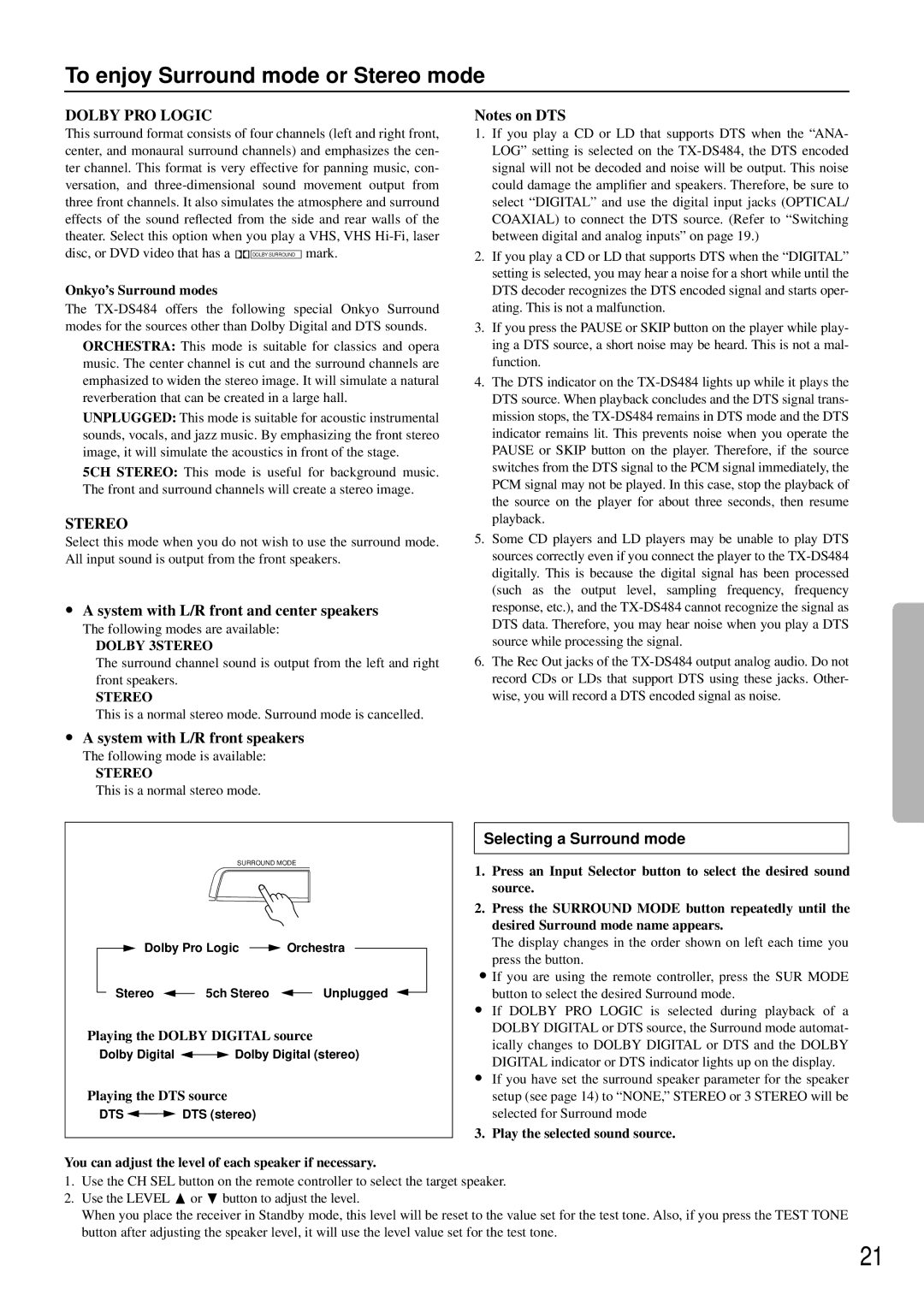
To enjoy Surround mode or Stereo mode
STEREO
Select this mode when you do not wish to use the surround mode. All input sound is output from the front speakers.
•A system with L/R front and center speakers
The following modes are available:
DOLBY 3STEREO
The surround channel sound is output from the left and right front speakers.
STEREO
This is a normal stereo mode. Surround mode is cancelled.
•A system with L/R front speakers
The following mode is available:
STEREO
This is a normal stereo mode.
Notes on DTS
1.If you play a CD or LD that supports DTS when the “ANA- LOG” setting is selected on the
2.If you play a CD or LD that supports DTS when the “DIGITAL” setting is selected, you may hear a noise for a short while until the DTS decoder recognizes the DTS encoded signal and starts oper- ating. This is not a malfunction.
3.If you press the PAUSE or SKIP button on the player while play- ing a DTS source, a short noise may be heard. This is not a mal- function.
4.The DTS indicator on the
5.Some CD players and LD players may be unable to play DTS sources correctly even if you connect the player to the
6.The Rec Out jacks of the
SURROUND MODE
Dolby Pro Logic ![]() Orchestra
Orchestra
Stereo | 5ch Stereo | Unplugged |
Playing the DOLBY DIGITAL source
Dolby Digital ![]()
![]() Dolby Digital (stereo)
Dolby Digital (stereo)
Playing the DTS source
DTS ![]()
![]() DTS (stereo)
DTS (stereo)
You can adjust the level of each speaker if necessary.
Selecting a Surround mode
1. Press an Input Selector button to select the desired sound source.
2. Press the SURROUND MODE button repeatedly until the desired Surround mode name appears.
The display changes in the order shown on left each time you press the button.
• If you are using the remote controller, press the SUR MODE button to select the desired Surround mode.
• If DOLBY PRO LOGIC is selected during playback of a DOLBY DIGITAL or DTS source, the Surround mode automat- ically changes to DOLBY DIGITAL or DTS and the DOLBY DIGITAL indicator or DTS indicator lights up on the display.
• If you have set the surround speaker parameter for the speaker setup (see page 14) to “NONE,” STEREO or 3 STEREO will be selected for Surround mode
3. Play the selected sound source.
1.Use the CH SEL button on the remote controller to select the target speaker.
2.Use the LEVEL π or † button to adjust the level.
When you place the receiver in Standby mode, this level will be reset to the value set for the test tone. Also, if you press the TEST TONE button after adjusting the speaker level, it will use the level value set for the test tone.
21
